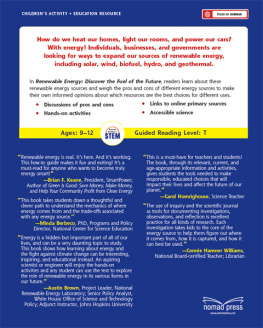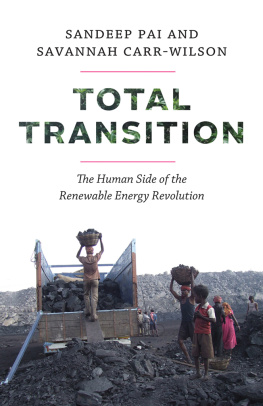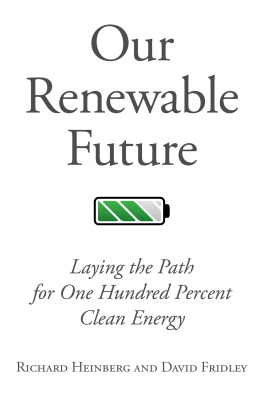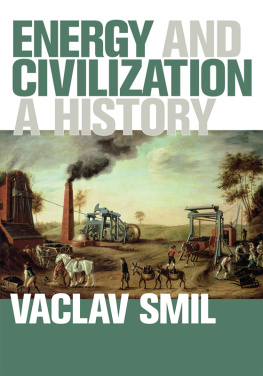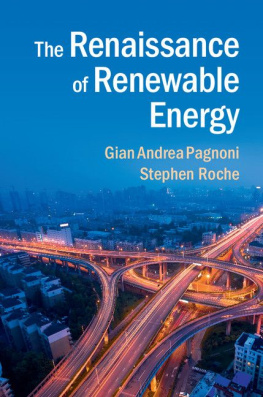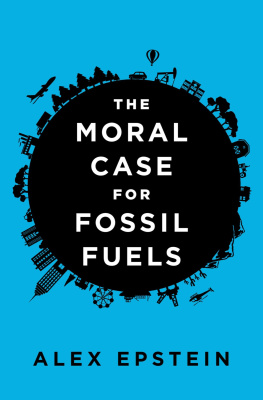Fuel
For my parents, diesel in intellect and solar in support:
Bonnie Kime Scott
and
Thomas Russell Scott
(19442017)
Environmental Cultures Series
Series Editors:
Greg Garrard, University of British Columbia, Canada
Richard Kerridge, Bath Spa University
Editorial Board:
Frances Bellarsi, Universit Libre de Bruxelles, Belgium
Mandy Bloomfield, Plymouth University, UK
Lily Chen, Shanghai Normal University, China
Christa Grewe-Volpp, University of Mannheim, Germany
Stephanie LeMenager, University of Oregon, USA
Timothy Morton, Rice University, USA
Pablo Mukherjee, University of Warwick, UK
Bloomsburys Environmental Cultures Series makes available to students and scholars at all levels the latest cutting-edge research on the diverse ways in which culture has responded to the age of environmental crisis. Publishing ambitious and innovative literary ecocriticism that crosses disciplines, national boundaries, and media, books in the series explore and test the challenges of ecocriticism to conventional forms of cultural study.
Titles available:
Bodies of Water, Astrida Neimanis
Cities and Wetlands, Rod Giblett
Civil Rights and the Environment in African-American Literature, 18951941, John Claborn
Climate Crisis and the 21st-Century British Novel, Astrid Bracke
Ecocriticism and Italy, Serenella Iovino
Fuel, Heidi C. M. Scott
Literature as Cultural Ecology, Hubert Zapf
Nerd Ecology, Anthony Lioi
The New Nature Writing, Jos Smith
The New Poetics of Climate Change, Matthew Griffiths
This Contentious Storm, Jennifer Mae Hamilton
Forthcoming Titles:
Anthropocene Romanticism, Kate Rigby
Cognitive Ecopoetics, Sharon Lattig
Colonialism, Culture, Whales, Graham Huggan
Eco-Digital Art, Lisa FitzGerald

Contents
I am grateful for the assistance of many friends and colleagues on the journey to press. The Association for the Study of Literature and the Environment (ASLE) community provided early suggestions for primary sources, and the preexisting work of its scholars was a foundation on which to build greater perspective into the energy humanities. Florida International University provided essential funds to enable the early research stages of the manuscript, and assistants Dina Lopez and Jennifer Kenneally combed through online archives armed with keywords. The University of Maryland continues to support my teaching and scholarship. Series editors Greg Garrard and Richard Kerridge generously advised and improved the manuscript through revisions and the peer review process. Readers Kathleen McCormick, Joseph Byrne, Bonnie Kime Scott, Colleen Flaherty, and Nina Gayleard provided insightful comments that helped flag my own energetic assumptions. Bloomsbury editors David Avital and Clara Herberg were responsive and personable amid the final flurry.
Thanks to you all.
A magic space-travel chair awaits you. It moves at 550 miles per hour, about two hundred times faster than you could move your own body over long distances. At thirty thousand feet, the chair flies above the clouds and affords you a birds-eye view of earth. You traverse 150 miles nearly due north, lifting clean out of the snags of Americas largest city. It safely delivers you within an hour to your far-flung destination, the state capital of Albany. Would you like African java, Indian tea, or one of a dozen corn syrup drinks while hurtling through thin air? There are fifty magic chairs on an airplane, in this case a small jet, and at this moment about ten thousand jets are in flight.
There is an alternative magic chair. This one averages sixty miles per hour over the ground, and takes about 2.5 hours to cross New York State. It is amazingly affordable and is continuously, redundantly available whenever you choose to leave the city. There is minimal danger to your body, though more than in the flying chair. Barring traffic, you will probably never need to slacken your superhuman pace during the 150-mile journey. If you do stop, every mass-produced delicacy known to modern society will be offered at multiple competing outlets.
A third chair also moves around sixty miles per hour, but this one rocks on rails and conforms to a time table. One advantage over the second chair is that it is completely self-navigating. This chair is propelled by a different refinement of the same stupendously powerful fuel that pushes chairs one and two: jet fuel, gasoline, and diesel, respectively. Oil. Slow-cooked plankton millions of years old. All three seats are departing right now.
Our near ancestor occupies a fourth chair on a boat. The 1807 river cruise from New York to Albany took about thirty hours, averaging five miles per hour. The North River steamboat was the first to navigate that length of the Hudson as a viable commercial ferry. Both of her paddle wheels turned by coal-fired steam, and she had supplemental masts with sails and rigging, a chimera run by fire and winda smoke-snorting dragon with pterodactyl wings. On this trip, though, the sails stayed furled. The North River burned ancient sunlight, materialized into carbon chains by plants, and then compressed by geologic plates. Coal. She quickly passed sailing sloops tacking windward, taking a straight course north toward her destiny. Her only trace past the first bend in the river was the gray fuzz of carbon fixed from Carboniferous-era air. After three hundred million years, the carbon is free again in the Anthropocene. We are liberated, too, in a way, from slow, disperse fuels formed from sun, wind, tides, wood, grass, and food, to the much denser fossil fuels found in geologic cemeteries. These load-liberating fossil fuels also liberate greenhouse gasses, causing climate change, civilizations leading challenge into the twenty-first century.

Now the nature of the chair changes. We are moving backward through time, and must exchange our lavish fossil-fuel-flown thrones for bare leather saddles. Its the late seventeenth century, and your saddle pack is stuffed with English silver to trade with Dutch trappers for fur. Keeping your fourth seat requires horsemanship, energy, endurance, and knowledge of the landscape. You may seek recourse to your pistol or fists along the way, depending on the motley company that loiters on the cliffs of the Hudson River. Your horse will require rest and feed, and you will need a new animal altogether if you wish to travel continuously to finish the journey in four days. If all goes well, you will have barely used linens in the bed at the inn, and also vittles and ale to wash down the dust. If not, you may have a leaf tuft beneath a stout oak and a saddle bag picnic. Nighttime brings a prayer that the local wolves and panthers do not visit your camp to kill and devour your chair.
The fifth seat tacks against the wind and tide on the ever-changing Hudson. You rarely sit down, and share a bunk bed in shifts. Your calloused hands follow shouted orders in concert with a dozen other laboring sailors as you stalk the fitful engine of the wind: elemental or primary energy. If you are Henry Hudson sailing in 1609, you hope that you will find China upstream, but once you traverse 150 miles in ten days (an average of 0.63 lateral miles per hour), you elect to return to Holland. Over the next few hundred years, your turn-around spot will become Albany, and sailing ships bearing goods from the interior will crowd the waters. China never materializes upstream, but the wind is free and abundant and sometimes blows the right way, allowing for the exchange of the rich natural resources of the interior, like timber and hides, for traded goods from Europe and points oriental.


